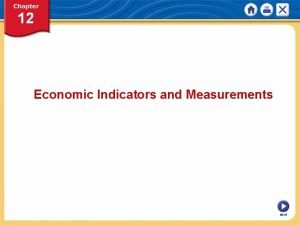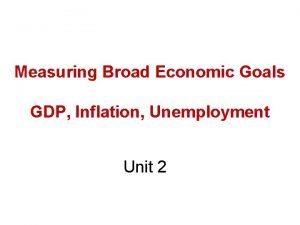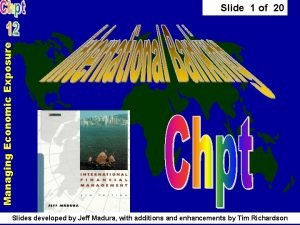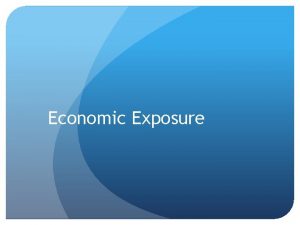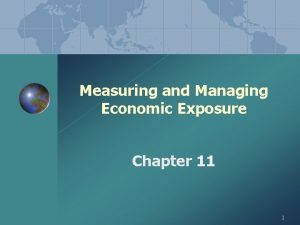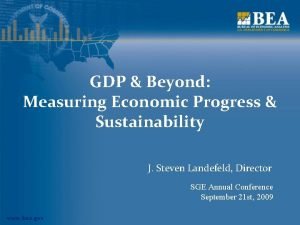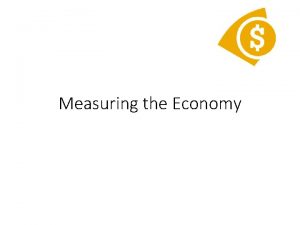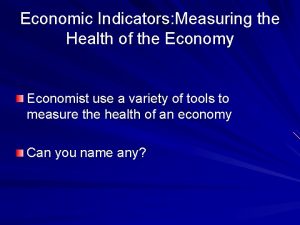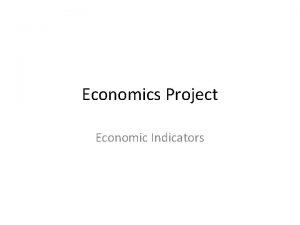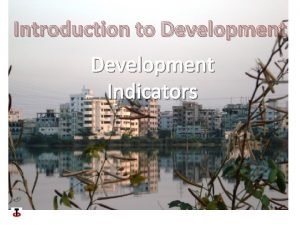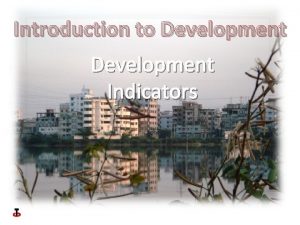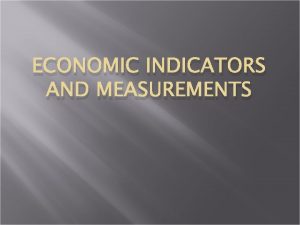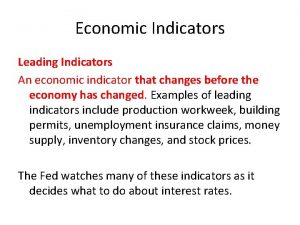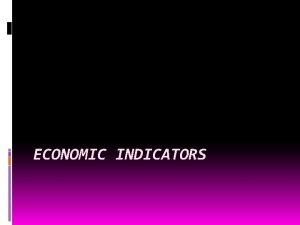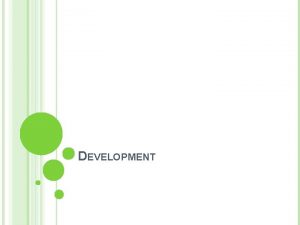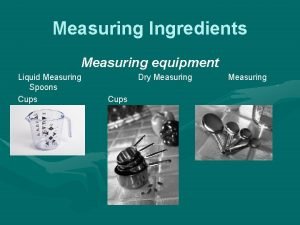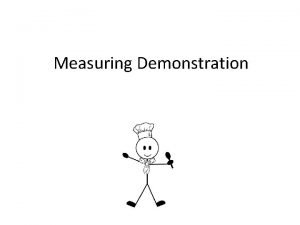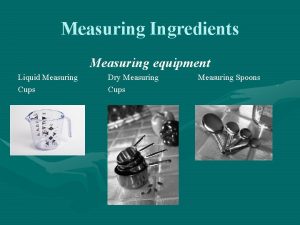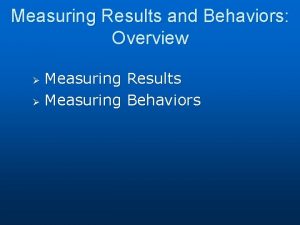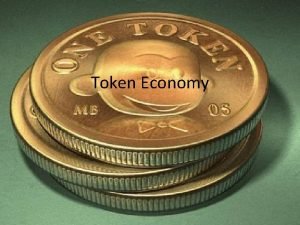MEASURING THE ECONOMY ECONOMIC INDICATORS What are Economic





















- Slides: 21

MEASURING THE ECONOMY

ECONOMIC INDICATORS • What are Economic Indicators? • Statistics that help economist judge the health of an economy. They provide information on important aspects of the economy. • Examples: • GDP = Gross Domestic Product • GNP = Gross National Product • Unemployment Rate • Inflation • Interest rate

ECONOMIC INDICATORS ARE DIVIDED INTO CATEGORIES: • Leading Indicators • Coincident Indicators • Lagging indicators

LEADING INDICATOR • An economic or financial variable that consistently rises or falls several months before the economy experiences expansion or a contraction.

COINCIDENT INDICATOR • Measures that consistently rise or fall along with expansions or contractions of the economy. • i. e. Real GDP or Inflation

LAGGING INDICATOR • These are measured several months after the rise or fall of an expansion or contraction. • Economist use them to confirm that one phase of the business cycle has ended another has begun. • i. e. Unemployment rate


GDP – GROSS DOMESTIC PRODUCT • Real GDP – Measure of a country’s economic output valued in constant dollars. • Real GDP reflects inflation. • Nominal GDP – measure of a country’s economic output valued in current dollars. • Nominal GDP does not reflect inflation.

HOW DO ECONOMIST CALCULATE GDP? • Divide the economy into four sectors: households, businesses, government and foreign trade. • GDP reflects the cumulative effect of each sector’s spending on goods and services produced within a country. • Four components of GDP: household consumption (C), business investment (I), government purchases (G), and the next exports minus imports (NX)

IS AN INCREASE IN GDP A GOOD INDICATOR OF A COUNTRY’S HEALTH? • GDP is a good indicator for a country’s economy. • It does have some limitations.

GDP LIMITATIONS • Leaves out unpaid households and volunteer work. • Ignores informal and illegal exchanges. • Counts some negatives as positives (rebuilding after a natural disaster) • Ignores negative externalities • Says nothing about leisure time or income redistribution

UNEMPLOYMENT RATE IS ALSO AN IMPORTANT INDICATOR OF AN ECONOMY'S HEALTH • Divide the total number of unemployed workers by the total number of people in the labor force. • Labor includes people of working age who are either working or seeking work.


TYPES OF UNEMPLOYMENT • Frictional: Results when workers are seeking their first job or have left one job and are seeking another. • Usually temporary.

TYPES OF UNEMPLOYMENT • Structural: Occurs because changes in technology reduce the demand for people with certain skills or jobs. • i. e. increase of internet has decreased the need for travel agents.

TYPES OF UNEMPLOYMENT • Seasonal: occurs when businesses shut down or slow down for part of the year. • i. e. lifeguards, ski instructors, tourism and some agricultural jobs. • Usually predictable, workers can reapply for their job when season is appropriate.

TYPES OF UNEMPLOYMENT • Cyclical: occurs during periods of economic decline. • When economic activity slows down. • Many workers with similar skills are laid off, compete with each other due to limited jobs. • Cyclical unemployed wont get jobs unless they retrain or economy improves.

OKUN’S LAW • Relationship between a country’s unemployment rate and a drop in its GDP. • Okun: each 1% increase in the cyclical unemployment rate will be matched by a 2% decline in GDP. • Okun’s law not accepted by all economist.

WHAT IS THE BUSINESS CYCLE? • A reoccurring pattern of growth and decline in economic activity over time. • 4 phases: • 1. period of expansion. • 2. the peak – point of highest economic activity. • 3. period of contraction or recession. • 4. Trough – point at which contraction reaches its lowest point.

WHAT IS INFLATION? WHAT ARE ITS CAUSES? • An increase in the money supply (if the amount of money pumped into the economy exceeds an increase in productivity. • Demand-Pull Inflation: A rise in the price of goods and services caused by an increase in overall demand. • Cost-Push inflation: A rise in the price of goods and services caused by increases in the cost of the factors of production.

HOMEWORK • Look up these terms and write down their definitions: • Economic Expansion • Economic Contraction • Economic Trough
 Antigentest åre
Antigentest åre Athens vs sparta differences
Athens vs sparta differences Gdp types
Gdp types Market transaction example
Market transaction example Measuring economic exposure
Measuring economic exposure Measuring and managing operating exposure
Measuring and managing operating exposure Measuring and managing economic exposure
Measuring and managing economic exposure Measuring economic sustainability and progress
Measuring economic sustainability and progress Thế nào là mạng điện lắp đặt kiểu nổi
Thế nào là mạng điện lắp đặt kiểu nổi Dạng đột biến một nhiễm là
Dạng đột biến một nhiễm là Nguyên nhân của sự mỏi cơ sinh 8
Nguyên nhân của sự mỏi cơ sinh 8 Bổ thể
Bổ thể Vẽ hình chiếu đứng bằng cạnh của vật thể
Vẽ hình chiếu đứng bằng cạnh của vật thể Phản ứng thế ankan
Phản ứng thế ankan Môn thể thao bắt đầu bằng từ chạy
Môn thể thao bắt đầu bằng từ chạy Thiếu nhi thế giới liên hoan
Thiếu nhi thế giới liên hoan Sự nuôi và dạy con của hươu
Sự nuôi và dạy con của hươu Alleluia hat len nguoi oi
Alleluia hat len nguoi oi điện thế nghỉ
điện thế nghỉ Một số thể thơ truyền thống
Một số thể thơ truyền thống Trời xanh đây là của chúng ta thể thơ
Trời xanh đây là của chúng ta thể thơ Thế nào là số nguyên tố
Thế nào là số nguyên tố


